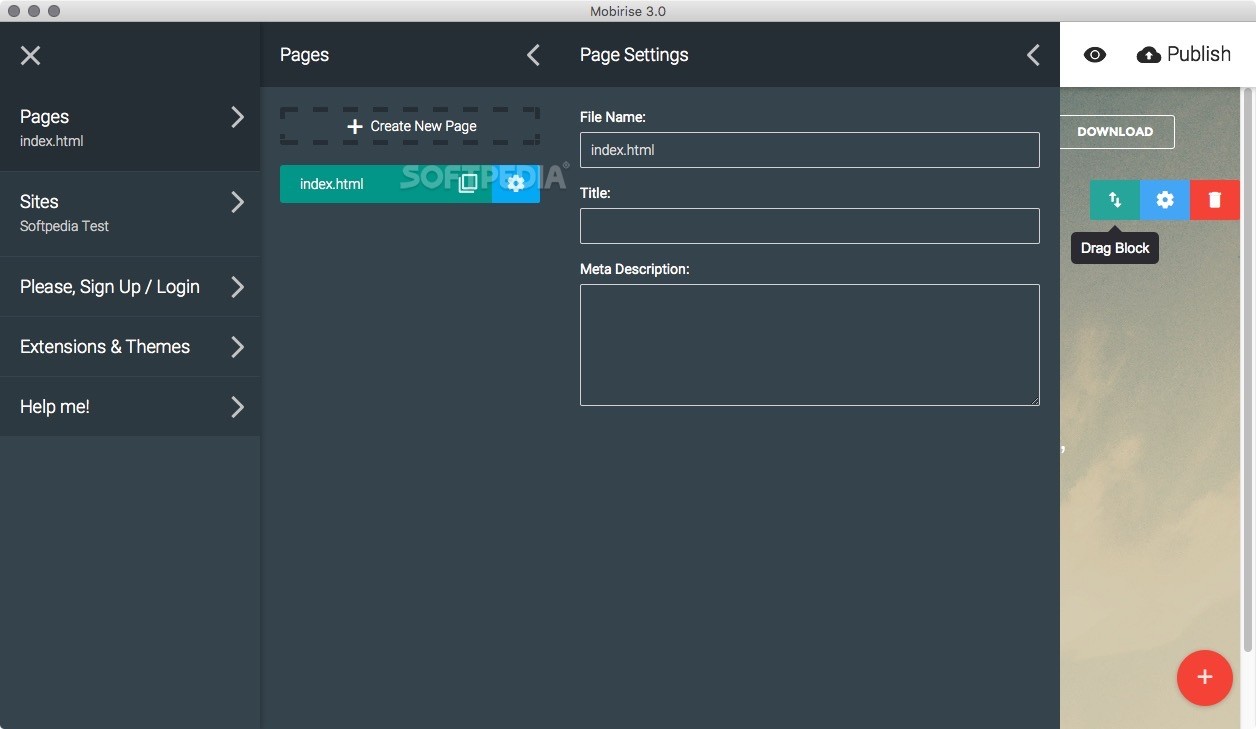- Phpmyadmin For Windows
- Phpmyadmin For Mac Os Versions
- Install Phpmyadmin Mac
- Phpmyadmin Mac Os X Install
- Phpmyadmin For Mac Os 10.13
For security reasons, phpMyAdmin is accessible only when using 127.0.0.1 as the hostname. To access it from a remote system, you must create an SSH tunnel that routes requests to the Web server from 127.0.0.1. This implies that you must be able to connect to your server over SSH in order to access these applications remotely.
IMPORTANT: Before following the steps below, ensure that your Web and database servers are running.
- How it all started: I was logged in to phpMyAdmin on my Macbook (which runs Mac OS X v10.7.4). I saw the message advising me to change the password of root, which by default has no password. I went to the Manage Privileges tab and changed the password for root on localhosts, webdev and 127.0.0.1.
- There are numerous Mac OS clients for MySQL, all of which work for MariaDB, although you generally have to use SQL statements to use MariaDB features like virtual columns, etc. First off, if you run a web server, you can use phpMyAdmin, which is nice because it.
- Download Updated Versions: XAMPP Version 7.4.6 for OSX XAMPP Version 7.3.18 for Mac XAMPP Version 7.2.31 for Mac XAMPP is quite attractive package for Mac users, because of it being Lightweight software, simpler GUI and inclusion of Number of tools/ features with it. This is a complete package which is easy to easy install, configure.
Thanks for contributing an answer to Stack Overflow! Please be sure to answer the question.Provide details and share your research! Asking for help, clarification,. This article covers how to install PhpMyAdmin on Mac OS X. PhpMyAdmin is a software tool written in PHP to manage and administer MySQL databases. It supports not only MySQL, but also MariaDB and Drizzle databases. PhpMyAdmin supports a variety of database operations such as managing databases, tables, columns, relations, indexes, users,.
Phpmyadmin For Windows
NOTE: The steps below suggest using port 8888 for the SSH tunnel. If this port is already in use by another application on your local machine, replace it with any other port number greater than 1024 and modify the steps below accordingly. Similarly, if you have enabled Varnish ™ or HTTPS redirection, your stack’s Web server might be accessible on port 81 (Varnish ™) or port 443 (SSL). In this case, modify the steps below to use ports 81 or 443 respectively instead of port 80 for the tunnel endpoint.
Phpmyadmin For Mac Os Versions

Access phpMyAdmin on Windows
Watch the following video to learn how to easily access phpMyAdmin on Windows through an SSH tunnel:
Install Phpmyadmin Mac
TIP: Refer to these instructions to learn how to obtain your private key.
In order to access phpMyAdmin via SSH tunnel, you need an SSH client. In the instructions below we have selected PuTTY, a free SSH client for Windows and UNIX platforms. The first step is to configure PuTTY. Find out how to configure PuTTY.
Once you have your SSH client correctly configured and you have confirmed that you can successfully access your instance using SSH, you need to create an SSH tunnel in order to access phpMyAdmin. Follow these steps:
Phpmyadmin Mac Os X Install
In the “Connection -> SSH -> Tunnels” section, add a new forwarded port by introducing the following values:
- Source port: 8888
- Destination: localhost:80
Remember that if you are redirecting HTTP requests to the HTTPS port, you must use destination port 443 instead of 80.
This will create a secure tunnel by forwarding a port (the “destination port”) on the remote server to a port (the “source port”) on the local host (127.0.0.1 or localhost).
Click the “Add” button to add the secure tunnel configuration to the session. You’ll see the added port in the list of “Forwarded ports”.
In the “Session” section, save your changes by clicking the “Save” button.
Click the “Open” button to open an SSH session to the server. The SSH session will now include a secure SSH tunnel between the two specified ports.
Access the phpMyAdmin console through the secure SSH tunnel you created, by browsing to http://127.0.0.1:8888/phpmyadmin.
Log in to phpMyAdmin by using the following credentials:
- Username: root
- Password: application password. (Refer to our FAQ to learn how to find your application credentials).
Here is an example of what you should see:
Phpmyadmin For Mac Os 10.13
If you are unable to access phpMyAdmin, verify that the SSH tunnel was created by checking the PuTTY event log (accessible via the “Event Log” menu):
Access phpMyAdmin on Linux and MacOS
To access the application using your Web browser, create an SSH tunnel, as described below.
- Open a new terminal window on your local system (for example, using “Finder -> Applications -> Utilities -> Terminal” in MacOS or the Dash in Ubuntu).
Make sure that you have your SSH credentials (.pem key file) in hand.
Run the following command to configure the SSH tunnel using the SSH key file. Remember to replace KEYFILE with the path to your private key and SERVER-IP with the public IP address or hostname of your server:
Run the following command to configure the SSH tunnel using the SSH password, remembering to replace SERVER-IP with the public IP address or hostname of your server. Enter your SSH password when prompted.
Remember that if you are redirecting HTTP requests to the HTTPS port, you must use destination port 443 instead of 80.
NOTE: If successful, the above command will create an SSH tunnel but will not display any output on the server console.
Access the phpMyAdmin console through the secure SSH tunnel you created, by browsing to http://127.0.0.1:8888/phpmyadmin.
Log in to phpMyAdmin by using the following credentials:
- Username: root
- Password: application password. (Refer to our FAQ to learn how to find your application credentials).
Here is an example of what you should see:
